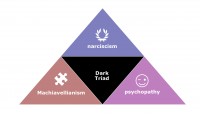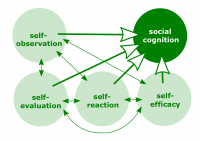OB personality concepts
Revision as of 01:15, 2 December 2018 by Gary (talk | contribs) (Created page with "OB introductory concepts are those concepts that are related to the core of the organizational behavior science. The concepts below are taken from Organizational...")
OB introductory concepts are those concepts that are related to the core of the organizational behavior science. The concepts below are taken from Organizational Behavior by Robbins and Judge (17th edition); Septem Artes Administrativi served as the primary source of illustrations.
Personality
- Personality. The sum total of ways in which an individual reacts to interacts with others.
- Heredity. Factors determined at conception; one's biological, physiological, and inherent psychological makeup.
- Personality trait. An enduring characteristic that describes an individual's behavior.
- Myers-Briggs Type Indicator. A personality test that taps four characteristics and classifies people into one of 16 personality types.
- Big Five Model. A personality assessment model that taps five basic dimensions.
- Conscientiousness. A personality dimension that describes someone who is responsible, dependable, persistent, and organized.
- Emotional stability. A personality dimension that characterizes someone as calm, self-confident, and secure (positive) versus nervous, depressed, and insecure (negative).
- Extraversion. A personality dimension describing someone who is sociable, gregarious, and assertive.
- Openness to experience. A personality dimension that characterizes someone in terms of imagination, sensitivity, and curiosity.
- Agreeableness. A personality dimension that describes someone who is good natured, cooperative, and trusting.
- Dark Triad. A constellation of negative personality traits consisting of Machiavellianism, narcissism, and psychopathy.
- Machiavellianism. The degree to which an individual is pragmatic, maintains emotional distance, and believes that ends can justify means.
- Narcissism. The tendency to be arrogant, have a grandiose sense of self-importance, require excessive admiration, and have a sense of entitlement.
- Psychopathy. The tendency for a lack of concern for others and lack of guilt or remorse when actions cause harm.
- Core self-evaluation. Bottom-line conclusions individuals have about their capacities, competence, and worth as a person. In other words, self-believing in one's inner worth and basic competence.
- Self-monitoring. A personality trait that measures an individual's ability to adjust his or her behavior to external, situational factors.
- Proactive personality. People who identify opportunities, show initiative, take action, and persevere until meaningful change occurs.
- Situation strength theory. A theory indicating that the way personality translates into behavior depends on the strength of the situation.
- Trait activation theory. A theory that predicts that some situations, events, or interventions "activate" a trait more than others.
Values
- Core value (collectively, also known as values). A basic conviction that a specific mode of conduct or end-state of existence is personally or socially preferable to an opposite or converse mode of conduct or end-state of existence.
- Values system. A hierarchy based on a ranking of an individual's values in terms of their intensity.
- Terminal value. A desirable end-state of existence; the goal a person would like to achieve during his or her lifetime.
- Instrumental value. A preferable mode of behavior or mean of achieving one's terminal values.
- Personality-job fit theory. A theory that identifies six personality types and proposes that the fit between personality type and occupational environment determines satisfaction and turnover.
- Person-organization fit. A theory that people are attracted to and selected by organizations that match their values, and leave when there is not compatibility.
- Power distance. A national culture attribute that describes the extent to which a society accepts that power in institutions and organizations is distributed unequally.
- Individualism. A national culture attribute that describes the degree to which people prefer to act as individuals rather than as members of groups.
- Collectivism. A national culture attribute that describes a tight social framework in which people expect others in groups of which they are a part to look after them and protect them.
- Masculinity. A national culture attribute that describes the extent to which the culture favors traditional masculine work roles of achievement, power, and control. Societal values are characterized by assertiveness and materialism.
- Femininity. A national culture attribute that indicates little differentiation between male and female roles; a high rating indicates that women are treated as the equals of men in all aspects of the society.
- Uncertainty avoidance. A national culture attribute that describes the extent to which a society feels threatened by uncertain and ambiguous situations and tries to avoid them.
- Long-term orientation. A national culture attribute that emphasizes the future, thrift, and persistence.
- Short-term orientation. A national culture attribute that emphasizes the present and accepts change.

